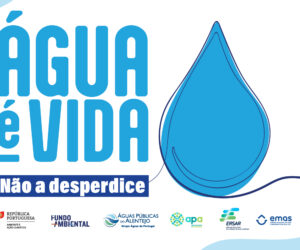 EMAS de Beja is carrying out an important intervention that consists of replacing one of the main pipelines in the water distribution system in the city of Beja that distributes water from the Conceição reservoir, which is located next to the EMAS headquarters building to the so-called downtown area of the city.
EMAS de Beja is carrying out an important intervention that consists of replacing one of the main pipelines in the water distribution system in the city of Beja that distributes water from the Conceição reservoir, which is located next to the EMAS headquarters building to the so-called downtown area of the city.
The intervention foresees the replacement of materials that are currently outdated and in poor condition with more current and environmentally more sustainable materials..
This will require the replacement of a water pipe measuring approximately 70 years old by a new duct whose material is High Density Polyethylene with an additional protective layer in polypropylene resistant to abrasion due to friction and/or tension (Stress Crack Resistance).
These changes will enhance better environmental performance of networks in terms of conservation and maintenance operations, and also in terms of water quality in the area served by this pipeline. The intervention differs from the usual ones due to the construction method adopted.
For the intervention in question, a construction method was chosen for the first time without opening a trench., o Slip Lining which consists of introducing the new piping inside the old duct without destroying it.
This construction procedure has several advantages compared to the traditional procedure. (trench opening), from the outset, the reduction of inconveniences associated with the constraints on the circulation of vehicles and people, which also ends up affecting commercial activity in the intervened areas, time savings as it substantially reduces intervention execution times, less environmental destruction by reducing waste production, allows the new infrastructure to be provided with an additional layer of protection as it is protected by the deactivated pipeline piping and minimizes the risk of work accidents associated with trenching work.
Another of the differentiating characteristics of this intervention, is the fact that EMAS de Beja has foreseen the implementation of inspection boxes in the pipeline, approximately every 100 meters. These boxes will have the main functions of allowing the analysis and monitoring of both hydraulic standards and water quality in the public network., as well as minimizing the uncertainty associated with the location of possible ruptures.
























